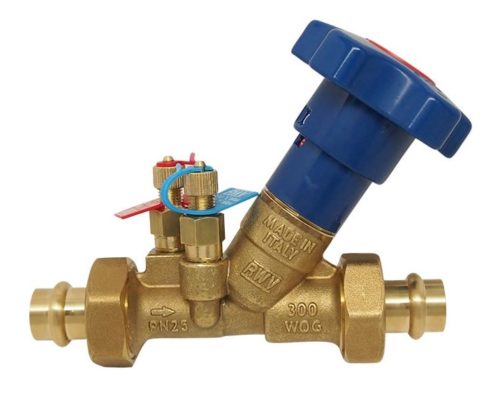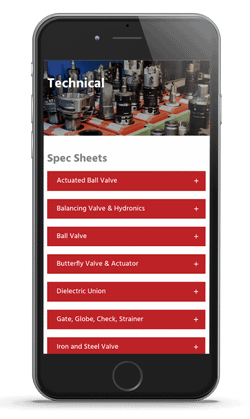 Balancing valves are throttling devices designed to regulate the fluid flow through hydronic components. In hydronic systems (HVAC systems that use water as a medium to heat and cool areas of the facility), they facilitate the distribution of heated or chilled water to all terminals. As a result, the system is able to achieve optimal performance, which translates to higher operating efficiency and lower operating costs.
Balancing valves are throttling devices designed to regulate the fluid flow through hydronic components. In hydronic systems (HVAC systems that use water as a medium to heat and cool areas of the facility), they facilitate the distribution of heated or chilled water to all terminals. As a result, the system is able to achieve optimal performance, which translates to higher operating efficiency and lower operating costs.
The following article discusses balancing valves for chilled water systems and heated water systems, including what they do, how to adjust them, and typical applications.
What Does a Balancing Valve Do in HVAC Systems?
The flow of fluid in an HVAC system is constantly changing to accommodate alterations in the conditions of the facility. Some of the factors that influence the demand for heating and cooling include building occupancy levels and heat from the sun. Properly designed and constructed HVAC systems should be able to offer the correct output when and where it is required. In unbalanced systems, there is a risk of underflow or overflow conditions, which can lead to insufficient or excessive heating or cooling. Balancing valves ensure the system delivers the right flow to all of the terminals, given the current facility conditions.
How a Balancing Valve Works
Hydronic Circuits
The flow of fluid in an HVAC system is constantly changing to accommodate alterations in the conditions of the facility. Properly designed and constructed HVAC systems should be able to offer the correct output when and where it is required.
Unbalanced System
Water will take the path of least resistance. Unbalanced systems risk underflow or overflow conditions, which can lead to insufficient or excessive heating or cooling. Rooms further from the pump receive less water due to different “resistances” created by lines of different length. Head loss grows with pipe length, turns, restrictions and gravity.
Balanced System
Balancing valves add the proper “resistance” on all lines, ensuring that the system delivers the right flow and temperature to all of the terminals, given the current facility conditions.
How Do You Adjust a Manual Balancing Valve to Maintain System Balance?
Differential pressure manometers/balancing computers—measure the pressure difference between two pressure points. Industry professionals can use this tool to calculate flow rates and determine if and when adjustments on the balancing valve(s) are needed to maintain system balance.
Typically, an HVAC system has a balancing valve for each terminal-unit coil and air-handling unit (AHU). Adjusting all of them to maintain system balance involves several steps. For manual balancing valves, these are:
- Connecting a differential-pressure gauge or circuit-balancing instrument to the two metering/test ports of the valve
- Determining the required rate of flow through the balancing valve
- Adjusting the handwheel to achieve the proper flow rate
- Repeating the above steps for all balancing valves
Applications of Balancing Valves
As indicated above, balancing valves help achieve and maintain proper conditions within hydronic systems. In addition to being used in HVAC systems, they are also integrated into the following:
- Heat exchangers
- Power generation systems
- Refrigeration systems
- Server cooling systems
- Water return lines
Contact the Valve Experts at RWV Today
Balancing valves are an essential component of hydronic systems. They ensure the proper temperatures within the facility are achieved and maintained, energy utilization is optimized, and operating costs are reduced. If you need balancing valves for your facility, turn to the experts at RWV.
At RED-WHITE VALVE CORP., we manufacture and distribute a broad selection of balancing valves. Our valves feature brass (DZR) construction for superior corrosion resistance and a fixed venturi design for easier setting requirements. We also offer accessories for all types of connections. To learn more about our products and how they can benefit your hydronic system, contact us today.

